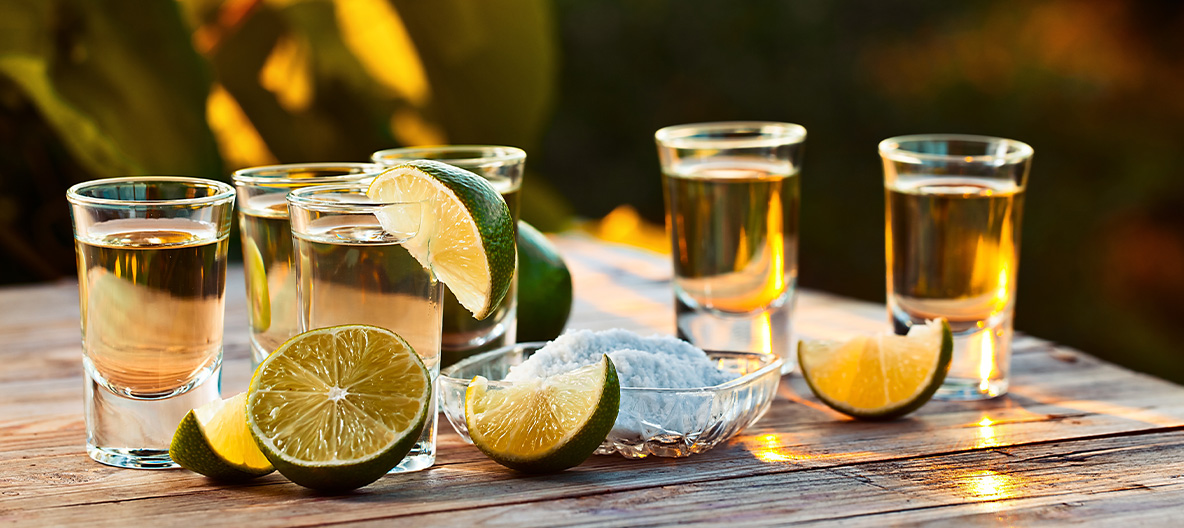Tequila is having quite a heyday. Last year, it surpassed whiskey in retail sales, making it the second best-selling spirit behind vodka, according to International Wine and Spirits Research. Thanks to the increased demand for premium and artisanal expressions and an influx of celebrity-led brands, the sheer amount of tequila choices consumers now have to sift through can be quite overwhelming.
Whether they’re looking for that perfect bottle to celebrate or for something to sip at home after a long day, here’s how you can help your customers narrow down their tequila search.
First, you’ll want to provide a quick primer on what tequila is — and what it isn’t. tequila is a type of mezcal, which is a spirit made from the sugars of the agave plant. This large, almost cactus-looking plant is actually a succulent related to the lily family. It takes 7 to 10 years to fully mature and be ready for harvesting by specialized, traditional farmers called Jimadors. The plant is trimmed down to its woody, pinecone-esque heart, and baked in a brick oven or autoclave. The juice is then extracted and fermented in steel tanks or wooden barrels and is distilled twice.
While tequila is a mezcal, not all mezcal is tequila. Technically speaking, tequila is a denomination of origin, akin to the way Champagne can only officially be labeled as such if it was produced in France’s Champagne region.
For a spirit to officially bear the name tequila, three criteria must be met:
1. It is produced in the Mexican state of Jalisco, or a select few municipalities in the states of Nayarit, Tamaulipas, Michoacán, and Guanajuato.
2. It is made with a minimum of 51% Blue Weber Agave, grown in these regions.
3. It contains between 35-55% ABV (FYI, the U.S. requires a minimum ABV of 40%).

It’s important to note that the 51% agave content minimum is simply a regulatory baseline. Any tequila with less than 100% blue agave, called “mixto,” is going to be low quality with excess added flavors and/or coloring — be prepared for it to seriously burn on the way down. In general, (unless your customer is looking for the cheapest option for lots of shots at a college party), you’ll want to direct them toward tequilas that clearly state they are 100% Weber Blue Agave.
Quick look: What to look for on a tequila label
· That it is, in fact, tequila
· Brand name
· Type, e.g., Blanco, Reposado, etc. (more on this below)
· Purity (100% is ideal)
· The word Puro, Azul, or Blue Weber Agave
· Distillery name and address
· Hecho en Mexico (made in Mexico)
· Norma Oficial Mexico (NOM), the distiller’s four-digit registration number
· CR, indicating it is a certified product
Now that they’ve got these basics under their belts, your customers can start getting to know the various types of tequila. Understanding the different styles is key to choosing the right bottle for their specific needs.
The vast majority of tequilas fall into three categories: Blanco, Reposado, and Añejo.
Blanco (sometimes called Plata), or silver tequila, is unaged and therefore offers the truest expression of raw agave flavor. This crystal-clear tequila is either bottled immediately after distillation or oxidized in steel or oak barrels for no more than two months. Blanco tequila has a strong vegetal flavor, with citrus and pepper notes and an almost spicy finish. Its unapologetic agave flavor makes it ideal for cocktails; however, tequila aficionados and agave purists will be happy to sip it slowly as is.
Reposado (rested) tequila is a light golden hue, thanks to aging up to one year in new oak or repurposed whiskey casks. As far as flavor, Reposado combines raw agave essence with the added smoothness and complexity of a barrel-aged spirit. With notes like vanilla, smoke, or even bourbon, it’s great for sipping and fantastic in cocktails for a pop of nuance and sophistication.
Añejo (vintage) tequila takes all the elements barrel-aging imparts and kicks them up a notch. Amber in color, Añejo is aged from one to three years, so that much of the original agave flavor gives way to deep barrel notes such as butterscotch, oak, or clove. Given its dark, rich flavor, añejo tequila is best enjoyed neat or on the rocks, although it can work as a substitute for whiskey-based cocktails. It’s also a safe option for bourbon/whiskey diehards looking to dip a toe into a new spirit category without making too dramatic a shift.
There are also two subcategories worth mentioning for extra-curious consumers:
· Extra Añejo: tequila that’s been aged a minimum of three years, and typically has a very smoky flavor. It’s comparable to fine French Cognacs, especially the price tag.
· Cristalino: another variation of tequila Añejo. A special filtration process strips the tannins to create a crystal-clear color and dampens some of the woodier notes from the barrel. The finished result blends the complexity of an Añejo with the crisp brightness of a blanco.
Armed with this info, your customers should now have a solid foundation to start their tequila search. The nice thing about a market awash with tequila options? All the fun they’ll have is sampling different brands and types until they find their perfect match!
Shop.sgproof.com is a great place to start any tequila adventure.

